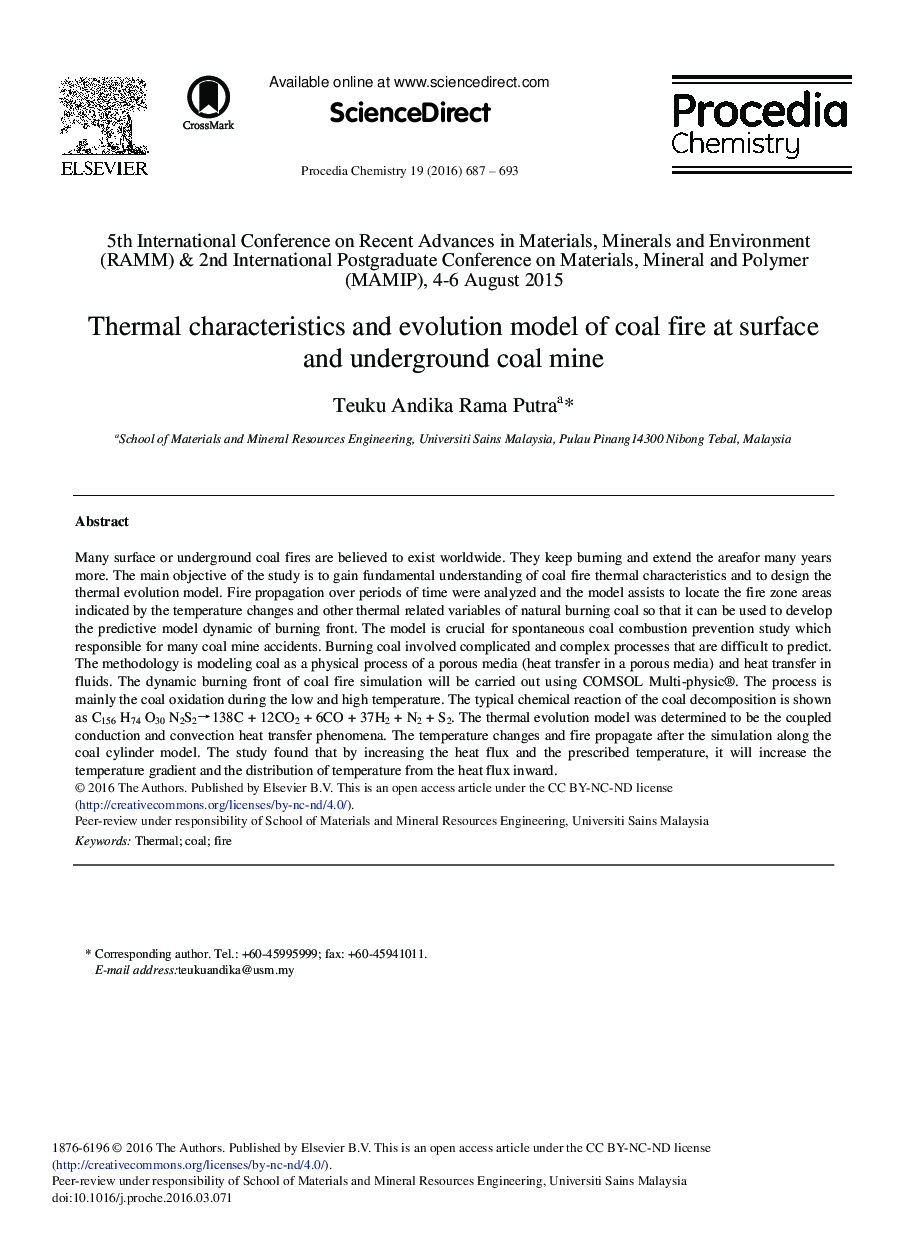| Article ID | Journal | Published Year | Pages | File Type |
|---|---|---|---|---|
| 239884 | Procedia Chemistry | 2016 | 7 Pages |
Many surface or underground coal fires are believed to exist worldwide. They keep burning and extend the areafor many years more. The main objective of the study is to gain fundamental understanding of coal fire thermal characteristics and to design the thermal evolution model. Fire propagation over periods of time were analyzed and the model assists to locate the fire zone areas indicated by the temperature changes and other thermal related variables of natural burning coal so that it can be used to develop the predictive model dynamic of burning front. The model is crucial for spontaneous coal combustion prevention study which responsible for many coal mine accidents. Burning coal involved complicated and complex processes that are difficult to predict. The methodology is modeling coal as a physical process of a porous media (heat transfer in a porous media) and heat transfer in fluids. The dynamic burning front of coal fire simulation will be carried out using COMSOL Multi-physic®. The process is mainly the coal oxidation during the low and high temperature. The typical chemical reaction of the coal decomposition is shown as C156 H74 O30 N2S2→138C + 12CO2 + 6CO + 37H2 + N2 + S2. The thermal evolution model was determined to be the coupled conduction and convection heat transfer phenomena. The temperature changes and fire propagate after the simulation along the coal cylinder model. The study found that by increasing the heat flux and the prescribed temperature, it will increase the temperature gradient and the distribution of temperature from the heat flux inward.
